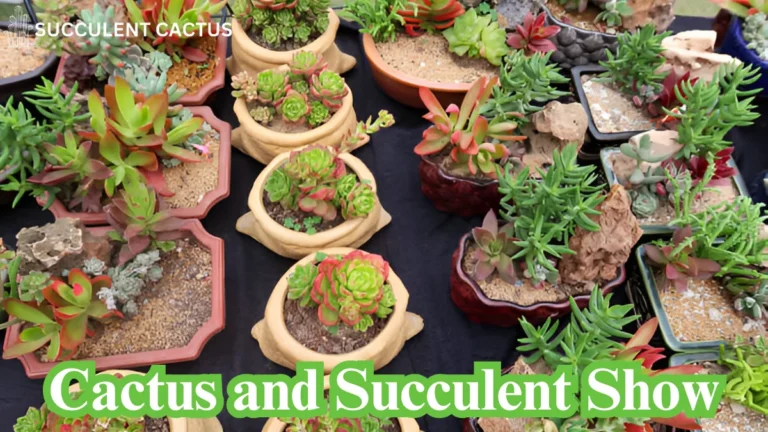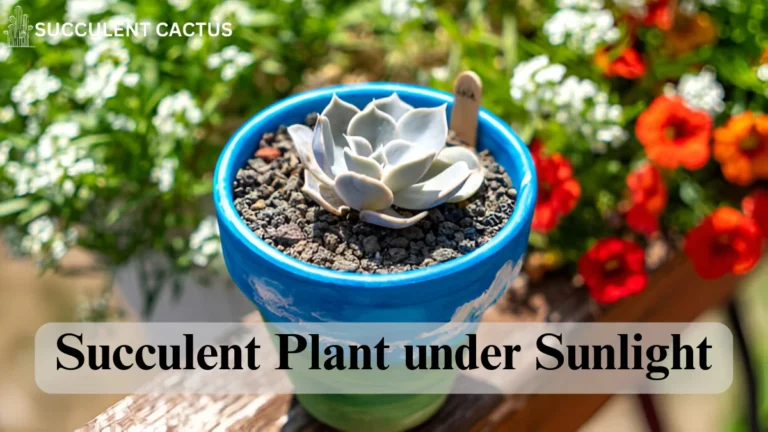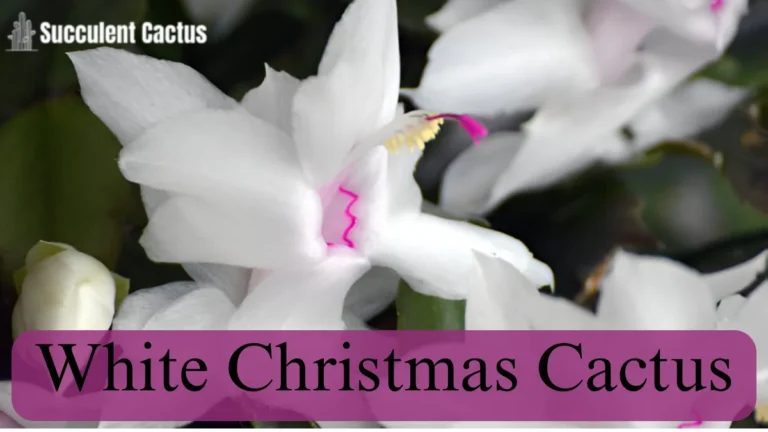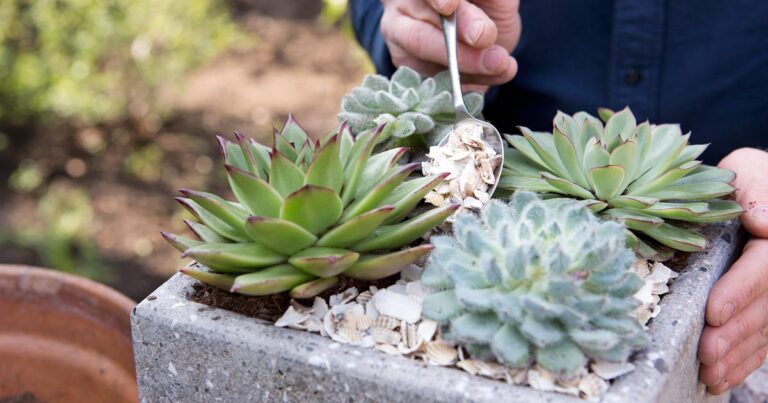Succulent Cactus Types with Pictures: A Comprehensive Guide

Succulents and cacti have become popular choices for home gardens, indoor décor, and landscaping due to their low maintenance and unique appearances. With so many varieties available, it can be overwhelming to choose the right ones. This guide explores different succulent cactus types with pictures, providing detailed insights into their characteristics, care needs, and best uses.
Understanding the Difference Between Cacti and Succulents
Cacti vs. Succulents: What Sets Them Apart?
Many people use “cactus” and “succulent” interchangeably, but there are distinct differences. All cacti are succulents, but not all succulents are cacti. Succulents are plants that store water in their leaves, stems, or roots, while cacti have specialized structures called areoles, from which spines and flowers emerge.
How to Identify a True Cactus
- Look for areoles, which are small, round, cushion-like spots on the stem.
- Cacti typically lack true leaves, while many succulents have fleshy ones.
- Most cacti have spines instead of soft foliage.
Common Myths About Succulents and Cacti
- “All succulents need full sun.” While many thrive in bright light, some prefer partial shade.
- “Cacti don’t need water.” They do, but less frequently than other plants.
- “Succulents can survive anywhere.” Many require specific temperature and humidity levels.
Popular Succulent Cactus Types with Pictures
1. Barrel Cactus (Echinocactus grusonii)
Also known as Golden Barrel Cactus, this round, spiny plant is a favorite among collectors.
Features:
- Size: Can grow up to 3 feet in diameter.
- Spines: Yellow, long, and sharp.
- Lifespan: Can live for over 30 years.
Best for:
- Rock gardens
- Indoor decoration (with caution due to sharp spines)
Care Tips:
- Needs full sunlight and well-draining soil.
- Water once every 2-3 weeks in summer, less in winter.
2. Bunny Ear Cactus (Opuntia microdasys)
Recognized by its oval-shaped pads, this cactus resembles bunny ears.
Features:
- Growth: Can reach 2-3 feet tall.
- Spines: Tiny, hair-like bristles (glochids) that can irritate the skin.
- Flowering: Produces yellow blooms in summer.
Best for:
- Indoor displays
- Low-maintenance gardens
Care Tips:
- Requires bright, indirect light.
- Avoid overwatering to prevent root rot.
Small and Miniature Succulent Cactus Types
1. Living Stones (Lithops spp.)
Lithops resemble pebbles or small stones, making them a fascinating addition to any collection.
Features:
- Size: Only 1-2 inches tall.
- Color Variations: Brown, gray, green.
- Flowers: Produces daisy-like blooms.
Best for:
- Desk plants
- Windowsill decorations
Care Tips:
- Needs minimal water (once a month in winter).
- Prefers full sun for at least 6 hours a day.
2. Moon Cactus (Gymnocalycium mihanovichii)
A colorful, grafted cactus that comes in bright red, orange, and yellow hues.
Features:
- Grafted onto another cactus for support.
- No chlorophyll, making it rely on its base for nutrients.
- Size: Grows up to 4 inches tall.
Best for:
- Beginner gardeners
- Indoor plant lovers
Care Tips:
- Thrives in indirect sunlight.
- Needs a shallow container with well-draining soil.
Large and Outdoor Succulent Cactus Types
1. Saguaro Cactus (Carnegiea gigantea)
The iconic cactus of the American Southwest, capable of reaching towering heights.
Features:
- Can grow over 40 feet tall.
- Develops arms after 50+ years.
- Can live for 150-200 years.
Best for:
- Desert landscaping
- Outdoor gardens in warm climates
Care Tips:
- Needs full sunlight and deep soil.
- Requires minimal watering once established.
2. Blue Torch Cactus (Pilosocereus pachycladus)
A stunning blue-hued cactus with columnar growth.
Features:
- Grows up to 10 feet tall.
- Produces white, nocturnal flowers.
- Native to Brazil and the Caribbean.
Best for:
- Outdoor gardens
- Architectural landscapes
Care Tips:
- Prefers well-draining sandy soil.
- Requires occasional fertilization in the growing season.
Cactus and Succulent Care Tips
| Care Factor | Succulents | Cacti |
| Watering | Every 1-2 weeks | Every 2-3 weeks |
| Sunlight | Indirect to direct light | Full sunlight |
| Soil Type | Well-draining, sandy mix | Cactus mix with perlite |
| Temperature | 60-80°F | 70-100°F |
| Fertilization | Monthly in spring & summer | Twice a year |
Unique and Rare Succulent Cactus Types
Not all succulents and cacti are common houseplants. Some rare varieties have distinct colors, growth patterns, and textures, making them a must-have for collectors.
Jelly Bean Succulent (Sedum rubrotinctum)
This delightful succulent has plump, rounded leaves that resemble jelly beans, often changing color depending on light exposure.
Features:
- Color Shifts: Green leaves turn red or orange in full sunlight.
- Growth Habit: Compact, spreading growth; stays under 8 inches tall.
- Flowers: Small yellow star-shaped flowers in spring.
Best for:
- Hanging baskets
- Rock gardens
- Tabletop arrangements
Care Tips:
- Water only when the soil is arid.
- Requires full sun to maintain color.
- Prefers well-draining, sandy soil.
Zebra Plant (Haworthia fasciata)
A unique striped succulent with textured, spiky leaves that resemble a zebra’s pattern.
Features:
- Size: Small, compact succulent, reaching about 5 inches tall.
- Leaves: Dark green with raised white horizontal stripes.
- Growth Habit: Forms dense rosettes, often producing offsets (baby plants).
Best for:
- Low-light indoor spaces
- Office desks and shelves
Care Tips:
- Needs minimal watering—water once every 2-3 weeks.
- Prefers bright, indirect sunlight but tolerates shade.
- Does well in shallow pots with good drainage.
Best Succulents and Cacti for Beginners
If you’re new to growing succulents and cacti, choosing easy-care varieties will set you up for success.
| Plant | Watering Needs | Light Requirements | Growth Rate |
| Jade Plant (Crassula ovata) | Every 2-3 weeks | Bright, indirect light | Slow |
| Aloe Vera | Every 2-4 weeks | Bright, indirect light | Moderate |
| Zebra Plant | Every 3 weeks | Low to medium light | Slow |
| Snake Plant | Every 3-4 weeks | Low to bright light | Moderate |
Jade Plant (Crassula ovata)
A long-living succulent with thick, glossy green leaves that sometimes develop a red tinge.
Care Tips:
- Thrives in full sun but tolerates indoor lighting.
- Water deeply but allow soil to dry out completely.
- Can be propagated easily from stem or leaf cuttings.
Fast-growing succulents and Cacti
Most succulents grow slowly, but some varieties can double in size within a year under ideal conditions.
Burro’s Tail (Sedum morganianum)
This trailing succulent has soft, plump leaves that resemble a tail.
Growth Rate:
- Can grow up to 4 feet long in just a few years.
- Thrives in hanging baskets, where stems can trail freely.
Care Tips:
- Handle with care—leaves fall off easily.
- Needs moderate watering but prefers dry conditions.
Pencil Cactus (Euphorbia tirucalli)
A tree-like succulent with long, thin green stems that turn reddish-orange in bright sunlight.
Growth Rate:
- Can grow up to 20 feet tall outdoors.
- In pots, it reaches about 6 feet.
Care Tips:
- Prefers full sunlight.
- Requires minimal watering—drought-tolerant.
Indoor vs. Outdoor Succulents and Cacti
Succulents and cacti can thrive both indoors and outdoors, but their care needs vary.
| Feature | Indoor Succulents | Outdoor Succulents |
| Sunlight Needs | Indirect or artificial light | Full sun |
| Watering Frequency | Less frequent | More frequent in dry climates |
| Temperature Tolerance | Needs consistent warmth | Can tolerate extreme temperatures |
| Examples | Jade Plant, Aloe Vera, Zebra Plant | Saguaro, Prickly Pear, Agave |
Best Indoor Succulents and Cacti
- Snake Plant
- Echeveria
- Zebra Plant
Best Outdoor Succulents and Cacti
- Agave
- Prickly Pear
- Yucca
Succulents and Cacti for Different Climates
Choosing the right succulent or cactus for your climate ensures healthy growth and longevity. While these plants are known for their adaptability, selecting species that thrive in your specific environment will make care easier and prevent common issues like rot or sunburn.
Succulents for Hot, Dry Climates
If you live in an arid region with scorching summers, choose succulents and cacti that can withstand intense heat and prolonged drought.
Best Choices:
- Saguaro (Carnegiea gigantea): A classic desert cactus that thrives in extreme heat.
- Prickly Pear (Opuntia spp.): Hardy and resilient, with edible pads and fruit.
- Agave (Agave americana): A dramatic succulent that tolerates poor soil and full sun.
- Aloe Vera (Aloe barbadensis miller): Requires little water and provides medicinal benefits.
- Desert Rose (Adenium obesum): Features thick stems and vibrant flowers, perfect for hot climates.
Care Tips:
- Use fast-draining soil to prevent moisture retention.
- Provide full sun exposure, at least 6-8 hours per day.
- Space plants apart for good airflow, reducing fungal infections.
- Water sparingly, allowing the soil to dry out completely between watering.
Succulents for Humid Climates
High humidity can be tricky for succulents, as excess moisture can lead to rot and fungal diseases. Some species, however, have adapted to humid environments and require minimal maintenance.
Best Choices:
- Haworthia (Haworthia fasciata): Tolerates humidity well, requiring minimal watering.
- Kalanchoe (Kalanchoe blossfeldiana): Thrives in warm, moist environments with good airflow.
- Snake Plant (Sansevieria trifasciata): Absorbs excess moisture from the air, preventing mold.
- Pothos (Epipremnum aureum): Technically a vine but pairs well with succulents in humid spaces.
- Jade Plant (Crassula ovata): Prefers drier conditions but can survive moderate humidity indoors.
Care Tips:
- Increase airflow by spacing plants apart or using a fan indoors.
- Water only when necessary, ensuring the topsoil dries before the next watering.
- Avoid misting—high humidity already provides ample moisture.
- Place plants near windows for indirect sunlight and fresh air circulation.
Cold-Tolerant Succulents
Not all succulents thrive in warm climates—some varieties are frost-resistant and can withstand cold winters with proper care.
Best Choices:
- Hens and Chicks (Sempervivum spp.): Hardy rosettes that tolerate freezing temperatures.
- Blue Chalk Sticks (Senecio serpens): A drought-resistant succulent that withstands occasional frost.
- Stonecrop (Sedum spp.): Extremely cold-hardy and excellent for rock gardens.
- Orostachys (Orostachys iwarenge): A unique succulent that thrives in alpine conditions.
- Agave Parryi: One of the most cold-tolerant agave species.
Care Tips:
- Protect from frost with mulch or garden fabric during extreme cold.
- Keep soil dry during winter to prevent freezing damage.
- Grow in containers and bring indoors if temperatures drop too low.
- Use pots with drainage holes to avoid excess moisture retention.
Common Problems with Succulent Cactus Plants
Even though succulents and cacti are low-maintenance, they can still face problems like overwatering, pests, and sunburn. Identifying these issues early can save your plants and keep them thriving.
Overwatering and Root Rot
Excess moisture is the #1 killer of succulents. Unlike other plants, succulents store water in their leaves and stems, making them highly susceptible to rot when overwatered.
Signs of Overwatering:
- Soft, mushy leaves that appear translucent.
- Roots turning black and emitting a foul smell.
- Leaves fall off easily at the slightest touch.
Solution:
- Stop watering immediately and let the soil dry completely.
- Repot the plant in fresh, well-draining soil if root rot is severe.
- Trim affected roots and allow them to be callous before replanting.
- Use terra cotta pots to improve soil drainage.
Pests: Mealybugs, Aphids, and Spider Mites
Even indoor succulents can attract pests, especially if conditions are too damp or overcrowded.
Common Pests and Their Signs:
| Pest | Signs of Infestation | Solution |
| Mealybugs | White cotton-like clusters on leaves and stems | Use neem oil or rubbing alcohol on affected areas |
| Aphids | Tiny green, black, or white bugs clustering near new growth | Spray with a mild soap and water solution |
| Spider Mites | Fine webbing on the plant and yellowing leaves | Rinse the plant with water and use insecticidal soap |
Prevention:
- Inspect new plants before introducing them to your collection.
- Keep plants clean by wiping leaves occasionally.
- Isolate-infested plants to prevent the spread of pests.
Sunburn (Brown or White Patches on Leaves)
Succulents need sunlight, but too much direct exposure—especially during summer—can scorch their leaves.
Signs of Sunburn:
- Brown, crispy patches on the leaves.
- Leaves turning white or bleached.
- Wrinkled and dehydrated appearance.
Solution:
- Move the plant to a shadier spot or provide partial shade.
- Water the plant thoroughly to help it recover.
- Gradually acclimate new succulents to direct sunlight.
How to Display Succulents and Cacti Creatively
Succulents are not only easy to care for but also incredibly stylish when displayed in creative arrangements. Whether you prefer modern terrariums, wall gardens, or DIY projects, these ideas will elevate your indoor and outdoor décor.
Succulent Terrariums
Terrariums create a miniature garden inside a glass container, making them perfect for desks, shelves, or coffee tables.
Best Plants for Terrariums:
- Haworthia: Compact and slow-growing, ideal for glass enclosures.
- Echeveria: Rosette-shaped succulents that stay small.
- Air Plants (Tillandsia): Require no soil and add variety.
Tips for Creating a Terrarium:
- Use a layer of pebbles for drainage at the bottom.
- Avoid enclosed terrariums—succulents need airflow.
- Water sparingly to prevent excess moisture buildup.
Vertical Gardens
A living wall of succulents adds a touch of greenery to small spaces and works well for patios and balconies.
Best Plants for Vertical Gardens:
- String of Pearls (Senecio rowleyanus): A trailing succulent with bead-like leaves.
- Burro’s Tail (Sedum morganianum): Cascading succulent that looks stunning in a frame.
- Sedum Varieties: Hardy and fast-growing, perfect for vertical planters.
How to Set Up a Vertical Garden:
- Use a wall-mounted planter or repurpose an old wooden frame.
- Fill pockets with well-draining soil to prevent root rot.
- Secure plants tightly and allow them to establish before hanging.
DIY Succulent Centerpieces
Succulents make beautiful centerpieces for dining tables, weddings, or coffee tables.
Ideas for Succulent Centerpieces:
- Driftwood Succulent Arrangement: Hollow out driftwood and plant succulents inside.
- Teacup Succulent Garden: Use vintage teacups for a charming, rustic look.
- Succulent Pumpkin Planter: Perfect for fall décor—hollow out a pumpkin and plant succulents.
Tips for Longevity:
- Use succulents that require minimal watering.
- Avoid using containers without drainage holes unless you add a layer of pebbles.
With these creative display ideas, you can transform any space into a stunning succulent haven. 🌵✨
FAQs
1. What is the easiest cactus or succulent to grow? Jade Plant, Aloe Vera, and Zebra Plant are beginner-friendly choices.
2. Can succulents survive in low light? Some, like Snake Plant and Haworthia, adapt well to low light.
3. Why are my succulent leaves falling off? Overwatering or sudden temperature changes can cause leaf drop
Conclusion
Succulent Cactus Types with Pictures offer endless variety for plant lovers. Whether you want miniature succulents for indoor décor or large cacti for landscapes, there’s a perfect plant for you. By understanding their growth needs, care tips, and creative display options, you can cultivate a thriving collection that enhances your home and garden.🌵✨






